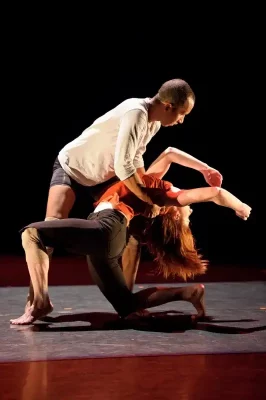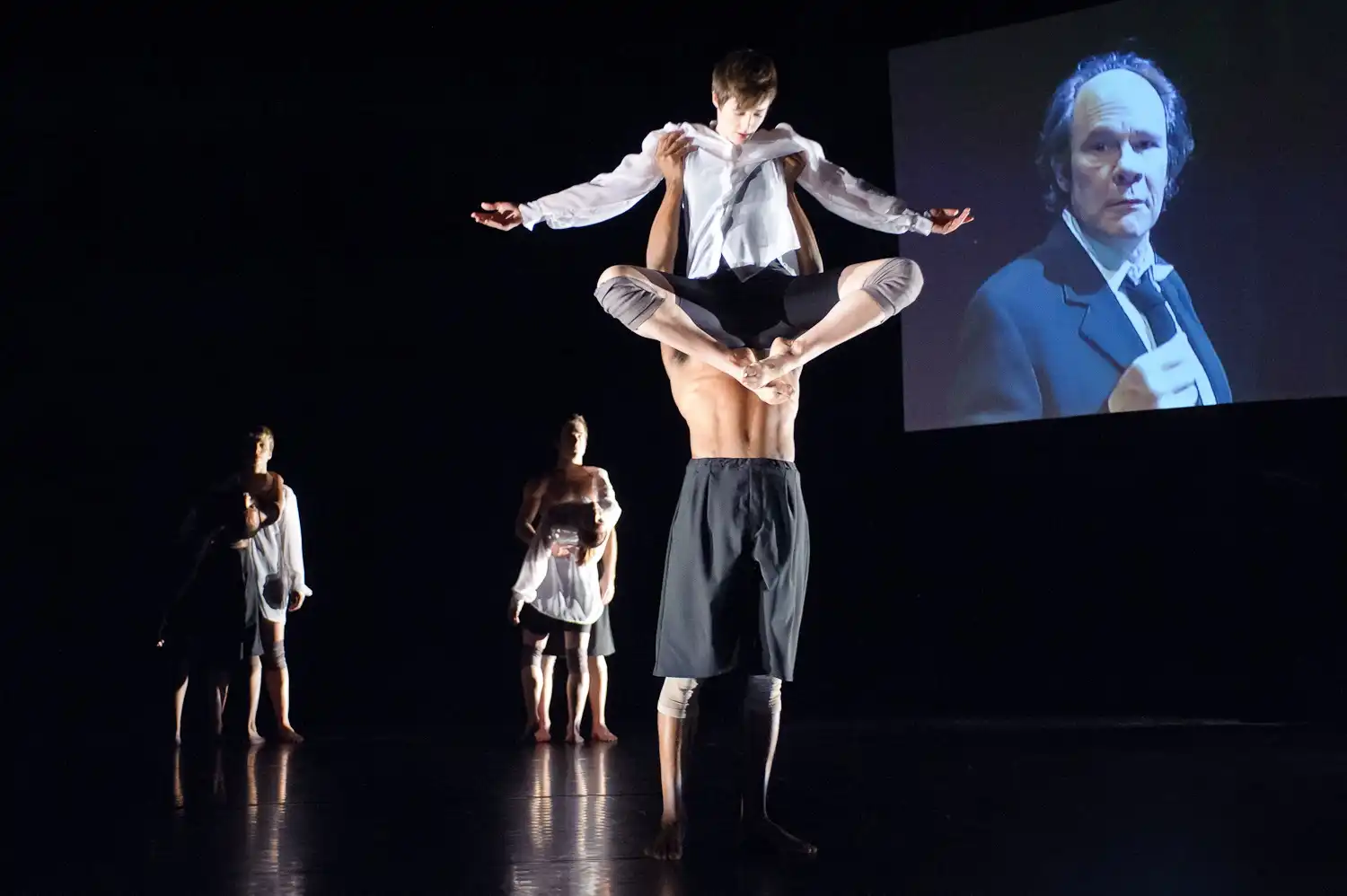Predict the Unexpected: Ririe-Woordbury Dance Company Presents Prism
Community
This last week, Ririe-Woodbury Dance Company, in a run which lasted from December 8 through 10, presented Prism, a showcase of the choreography of Charlotte Boye-Christensen. Since 2002, Boye-Christensen has brought state-of-the-art dance to Utah, and Prism continued to do nothing less. True, the first two pieces of the evening had been performed previously by the company. Push, the first number of the evening, was a taken from this September’s performance. Neither piece, however, felt a mere reiteration. Set in a different context – the first within the smaller Leona Wagner Black Box Theater, and both within a different suite of dances—each took on a leaner feel and a greater sense of self-awareness.
Push is remarkable amongst Boye-Christensen’s ouvre, because the piece, unlike so much of her work, makes no obvious reference to film or video projection. So much are references to cameras and projectors eschewed, one can only read this absence as deliberate and significant. Especially powerful were the moments in which three members of the company pressed their heads together, as if locking horns, and created a human tripod, without any use of arms. The feat creates not so much a sense of physical danger as of intense physical pressure.
The same gesture was repeated later in the dance, though this time with only a male and female dancer, the latter of which exits the mock showdown (whether in victory of defeat, it is hard to say) by precipitously plunging forward, face-first, directly toward the stage. Unlike more conventional choreographers, Boye-Christensen’s goal seems to be to make dancing appear the opposite of easy.
Touching Fire, the next piece of the evening, features music by Nick Cave, Boris and Sunn O))), Franz Schubert and The Black Angels. As in Push, in Touching Fire the body becomes an object of inquiry, as is the process whereby it is converted into a media image. In this piece, mirrors multiply the dancers’ images, making them seem strangely disembodied. This use of windows/mirrors, a technique first pioneered in the 1970s in work of conceptual and media artist Dan Graham, confounds not only image and reality but also sculpture and architecture as well as public and private space. Mirrors also force the audience to see itself on stage, sees itself seeing, as if from the dancers’ perspective.
Above these scenes of soft violence by surveillance and air conditioning, the disembodied voice of fiction writer David Kranes issues an ongoing monologue, speaking of a longing simultaneously to enjoy contrary states: to be firmly grounded and yet suspended in air, to be wholly engulfed by another and yet utterly alone, to experience perfect familiarity and yet abide with a total stranger. Here, through various means, the audience is forced to confront its—generally unacknowledged—voyeuristic investment in modern dance.

After a brief intermission, the company returned with two pieces never before seen in Utah. Indeed, the first number, West, is, technically, not yet completed and was presented under the aegis of preliminary sketches. The dance, which features the music of Nick Cave, Tom Waits and Cat Power, begins with two rows of dancers seated facing one another. If Touching Fire, through to use of mirrors, confronted the audience with an image of itself, West, instead sets the company as two rows of audience members made to face one another. Each struggles to stay awake, or keep its counterpart awake, though each alternately drifts off into states of somnolence.
Next, the facing rows of chairs were removed and three office chairs were set in a loose cluster. The various movements of deep emotion and attentive rest, contrasting sharply with the earlier sleeping and starting, evoked the expressive swaying of classical music performers, and indeed this whole section of the piece created the impression of a string trio performance, though one written not for actual strings but rather dancers. Later, the music of Tom Waits took the dance in a more overtly humorous direction.
The final piece of the evening, But Seriously…, was a genuine debut performance. It combined the talents of Boye-Christensen with those of David Kranes, set designer Nathan Webster and standup comic Ethan Philips. The score featured songs by The Shins, Ernesto Lecuona, Gogol Bordello and Charles Aznavour. Projecting a larger-than-life profile head-shot of Philips above and behind the company, Boye-Christensen seems choreographically to tropes the famous question posed some decades ago by Frank Zappa: does humor belong in serious modern dance?
Not only does Philips, in his monologue, make himself the subject of his own savage wit, but even the very stuttering of the video editing, which mimics Philips’s own stuttering delivery, creates a thick feeling of ill ease. Further, despite one’s best intentions to remain focused on the company, it is impossible not to allow one’s attention to drift away from the beautiful and athletic posturing on stage and toward video images of a balding and disheveled neurotic hovering—like Oz The Great and Pitiful—on a screen above the live action. The competition seems entirely deliberate. And the stakes of the dance are significantly raised when the standup comic shifts gears and becomes a veritable insult comic. Now, instead of directing the blade against himself, Philips begins to mock the dancers themselves. So, how much anxiety can a modern dance audience endure? But Seriously… demands an honest answer.
Transgressive, indeed threatening, innovations of this sort have come to be a regular occurrence as Charlotte Boye-Christensen continues to keep modern dance in Utah genuinely avant-garde. But for all that innovation is now to be expected at the Rose Wagner Performing Art Center, the precise form such innovation will take, thanks to the work of a truly critical choreographer, remains ever unpredictable. The Ririe-Woodbury Dance Company continues its 2011 – 2012 season with Kaleidoscope, which takes place on February 3 and 4, at the Capitol Theater.
